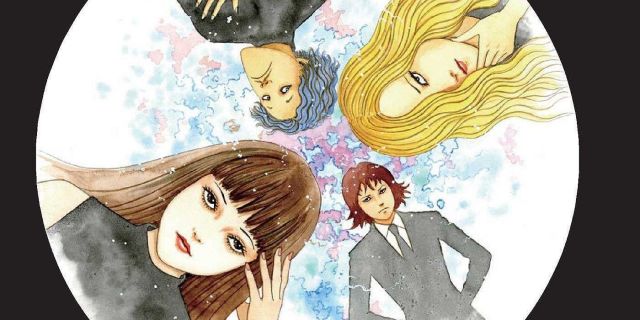The following article contains mention of topics relating to suicide.
Junji Ito has made quite a name for himself. Being known as one of the most prolific horror manga artists, he has reached mainstream heights of popularity and is frequently referenced in Western pop culture. Even the crew working on American animated series such as SpongeBob Squarepants has paid tribute to Ito’s work. He has also been picked up by the famed card game Magic: The Gathering, offering his signature style to the popular table-top game. Ito is more than worthy of the praise he’s earned, and his latest collection, Black Paradox, is just another addition to his growing line of masterpieces, perfectly blending science fiction and horror with fascinating and gruesome results as expected from the master of horror manga.
Four people meet up in person after making a suicide pact online via a website called “Black Paradox”. Maruso, a nurse with a nihilistic outlook on the future; Taburo, a man who is constantly afraid of a look-a-like who stalks him; Pii-Tan, an engineer who has successfully made a robotic Doppelganger of himself and now dreads his own existence; and Baracchi, a woman who hates herself due to a gruesome birthmark on her face. The fatal four meet with a plan to die together, but while searching for a means to end their own lives, unwittingly stumble upon a bizarre series of events that changes their lives forever.
Black Paradox Is Another Strong Addition to Ito’s Growing Library of Work

The best thing about Black Paradox is how it makes the reader connect with its quartet of suicidal characters. Their pain is palpable, and the story never shames them for wanting to die, instead casting a sympathetic light which in turn gives them a strange set of circumstances to keep on living. Avoiding spoilers, riches ensue and in the story’s peculiar way, it utilizes bizarre horror to tell the reader that suicide is not the answer. Horror is not often the medium used to give hopeful messages to the suicidal, and Black Paradox has, in a roundabout way, done just that.
As for the artwork, as with most of Ito’s work, it is top-notch with some macabre visuals that will stay with the reader long after they complete the book. The main four are all one-of-a-kind in their designs. Everything from Maruso’s doe-like appearance; Taburo’s pretty boy intensity; Baracchi’s beauty juxtaposed with a gruesome birthmark; plus Pii-Tan — who stole the show in terms of character design — with their wild and comical depiction. Even by Ito’s traditional design standards, this story goes the extra mile to make the characters feel unique.
Black Paradox Is a Memorable Sci-Fi Horror Experience

Although somewhat typical of Ito’s other works, the story takes many risks that pay off. Most of Ito’s other works deal with paranormal trappings or turning the mundane aspects of day-to-day life into a terrifying experience. There are more sci-fi vibes in Black Paradox and some commentary on how the overindulgence of resources will inevitably lead to humanity’s downfall.
But much like the themes of suicide, Black Paradox does not preach or hammer these points home but lets the reader put the pieces together via visualization. All in all, Black Paradox is a worthy addition to the lexicon of Junji Ito and is a must-read for fans of his work, and fans of bizarre horror alike.















Leave a Reply